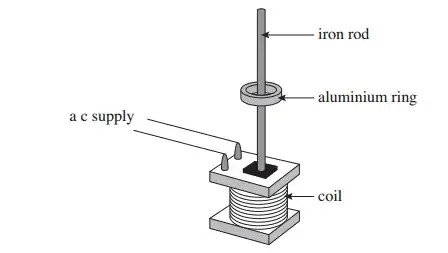
Considering the above diagram, I am failing to see why the aluminium ring floats upwards rather than oscillates. I understand Faraday's law, but I am struggling with Lenz's law - as there is an alternating current, an alternating magnetic field is produced, similar to a sine wave. Therefore, I assumed that the flux through the iron core can also be modeled as a sine wave, with the flux increasing and decreasing with the magnetic field.
As the flux increases through the ring, I understand that a current will be induced which opposes the increase in flux, i.e. a current which would produce a force upwards. However, in the case where the flux is decreasing i.e. from 90 to 180 degrees on a sine wave, it is my understanding that the ring will want to "increase" its flux, opposing this change and this would be a force downwards, rather than upwards so hence producing an oscillation.
However, I am given that "When the alternating current supply to the coil is switched on, the aluminium ring moves up the rod until it reaches a stable position ‘floating’ above the coil".
Can anybody shed any light on the situation?